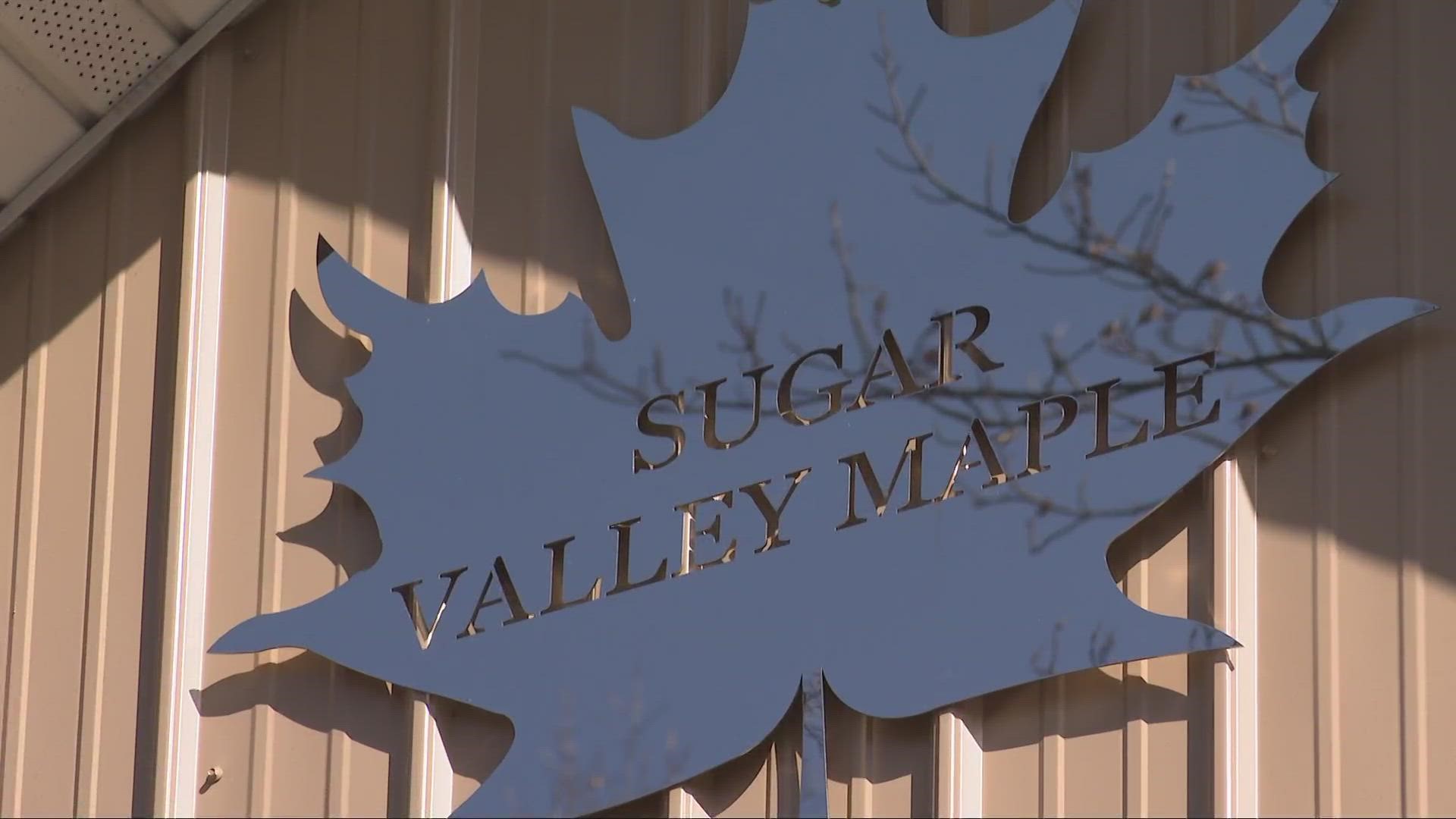GEAUGA COUNTY, Ohio — On Wednesday at Sugar Valley Maple in Geauga County, James Miller checked on a few of his taps. On his 80 acres of land, he has about 3,000 taps, all harvesting sap from maple trees.
“It means a lot to me to be out in the woods, especially on a day like today, collecting sap and all that,” Miller said.
In Miller’s words, the practice of making maple syrup runs in his blood. His son will be the fourth generation in his family to pursue the craft, and Miller has been making the sweet stuff for more than four decades.
That also means that he’s seen many sugaring seasons, and he said this one has been particularly positive.
“So far, this is March first, and it has been a very good year. Syrup is a good color, good quality, and we have all three grades, golden, amber, and dark,” he said. “We’re almost at a full crop, we already made more than last year.”
Miller isn’t the only one having a strong season. Tom Salo, with Salo Maple Products, said he has also harvested and produced a lot of syrup this season.
“So far I’ve got more than half our crop produced in less than a month. The last three years have been an average crop,” said Salo. “My crop is normally about 200 to 250 gallons, I hit 230 last night. The previous years were 175 and 150, so it’s been a really good year for us here in Ohio.”
Both producers said the season varies depending on the weather and year, but typically begins sometime in January, and ends sometime in March. Production relies largely on mother nature, and this year, she’s been kind.
“In the spring when the temperatures go below freezing and above freezing is when the sap runs up and down the trees,” said Miller. Miller explained, however, that too many days of warm weather in a row can negatively impact the taste of the syrup.
Miller said when it’s above freezing, the sap comes out of the holes, to be collected and eventually put through the process of reverse osmosis, boiling, filtering, and eventually, bottling. That process is a long one, and requires large amounts of sap to distill down into syrup.
“When sap comes out of a tree, it’s approximately 2% sugar, 98% water, so there’s a lot of evaporation that has to happen there to get a very good flavored maple product,” Miller said.
According to Miller, each tree produces about 25 gallons of sap per year, which is equal to about a half gallon of syrup.
Miller and Salo both encourage people to support local maple producers, many of whom produce not only maple but other items like maple cream, candies, and even cotton candy.
“Come out, see how maple’s made, see how we use it. It’s more than for pancakes, we use it for, like I said, all kinds of things – confections, candies,” Salo said. “See how it’s made, see where your maple, where your food comes from.”
For those who are curious to learn more, local producers are holding open houses the first and second weekend of March, where the public can pop in and see how the syrup is made while satisfying their sweet tooth.

